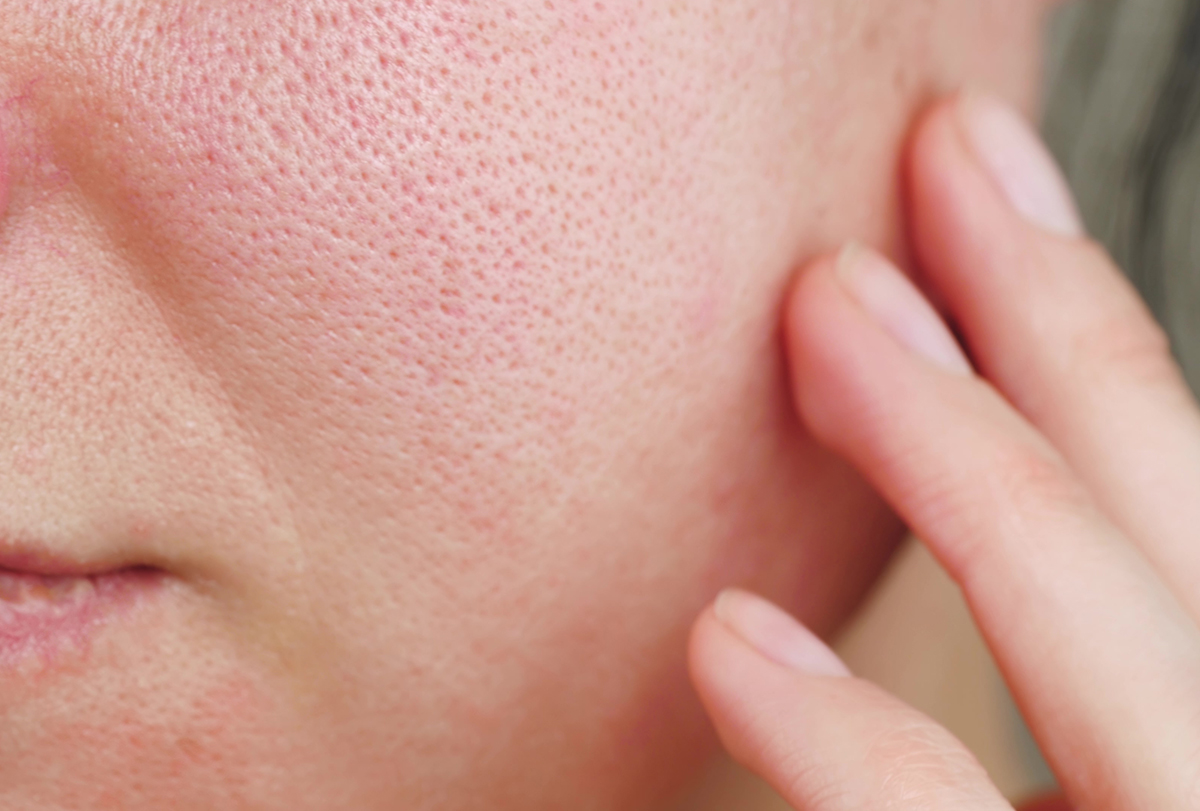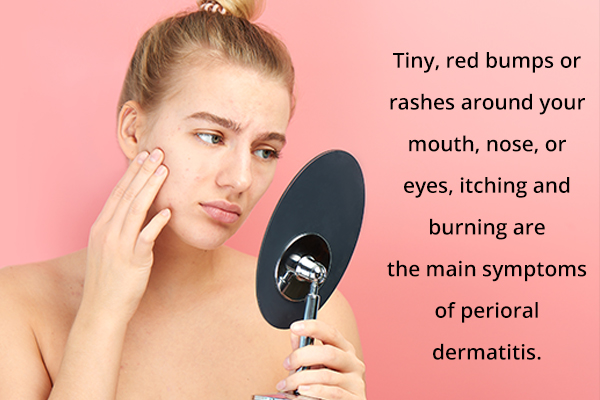In this article:
Are you suffering from itchy rashes or bumps around your mouth? You may have a condition known as perioral dermatitis. Don’t panic just yet – the only scary thing about this ailment is its name.

Perioral dermatitis refers to a dry, red rash that occurs around the mouth. It is also called periorificial dermatitis as the rash may spread around the orifices of the eyes and nose.
Perioral dermatitis is more common among adult women (between 18 and 50 years old) and is rarely seen in men or children. (1) This condition can last for months at a time, and long-term treatment may be required.
Causes of Perioral Dermatitis
The exact cause of perioral dermatitis is unknown, and flare-ups may occur due to various reasons. Some common factors that are known to aggravate this condition are:
- Inhaled steroid sprays and nebulizers also prescribed for asthma
- All steroid creams, including over-the-counter ones
- Rosacea, a condition that causes abnormal redness and bumps, usually on the face
- Hormone fluctuations during or before your period or pregnancy
- Overuse of cosmetic products, especially paraffin-based foundations, creams, sunscreen, etc. (1)
- Stress and lack of proper sleep and stress
- Birth control pills, which disrupt your body’s balance of hormones and gut bacteria
- Fluoride-based toothpaste or mouthwash
- Overuse of corticosteroid medicines (It is necessary to follow the exact dosage and instructions given by your doctor when taking prescription medications.)
Symptoms of Perioral Dermatitis

Symptoms include:
- Tiny red bumps or rashes around your mouth, nose, or eyes
- Itching and burning
- At times, perioral dermatitis can resemble acne
- Pus or fluid-filled bumps
- Scaly bumps
Treatment Options for Perioral Dermatitis
Here is a list of possible treatments used for perioral dermatitis.
Topical treatments:

1. Face washes and moisturizers
Use mild face washes and cleansers that are free of harsh foaming agents such as sodium laureth sulfate. Avoid moisturizers that contain lanolin or artificial fragrances and opt for water-based ones.
2. Immunosuppressant creams
Topical pimecrolimus is often used to cure different types of dermatitis. To use, apply a little of this medication to the affected areas.
Oral medications:
Oral antibiotics
Broad-spectrum antibiotics such as tetracycline, doxycycline, or minocycline are used when your doctor suspects that your perioral dermatitis is aggravated by an underlying skin infection and may be resistant to topical treatments. (2)
Always follow the exact dosage prescribed by your doctor when taking antibiotics.
Diagnosing Perioral Dermatitis
Dermatologists can diagnose perioral dermatitis by its appearance and location on the skin. They may ask for your medical history. Sometimes, a skin biopsy may be needed to distinguish it from other types of dermatitis.
When to See a Doctor

Maintaining proper hygiene and avoiding the use of cosmetics and other facial products that contain harsh chemicals are usually effective ways to clear up the rash. However, if it persists contact your doctor.
Final Word
Unsightly red spots on the face can be embarrassing, to say the least. You may be tempted to cover the spots with concealer, but keep in mind most cosmetics contain harsh chemicals that might further irritate your skin.
Stick to the treatment prescribed by your doctor to avoid aggravating the condition. Contact your doctor if your rash gets worse or responds badly to treatment.

- Was this article helpful?
- YES, THANKS!NOT REALLY


